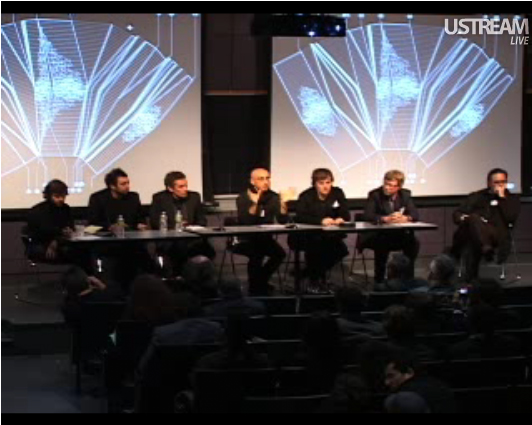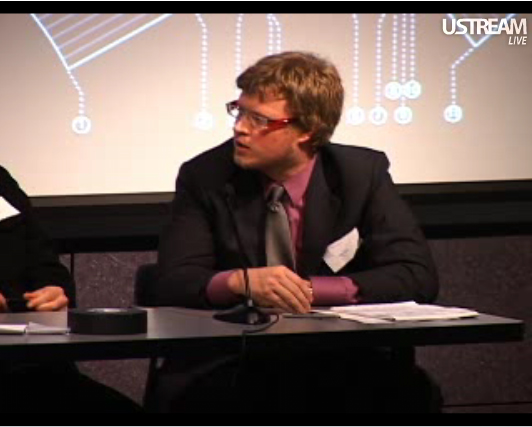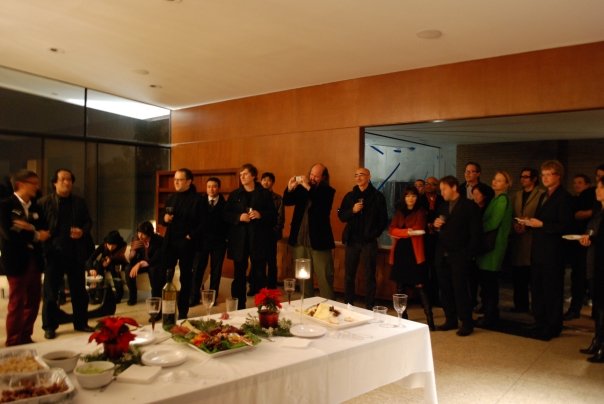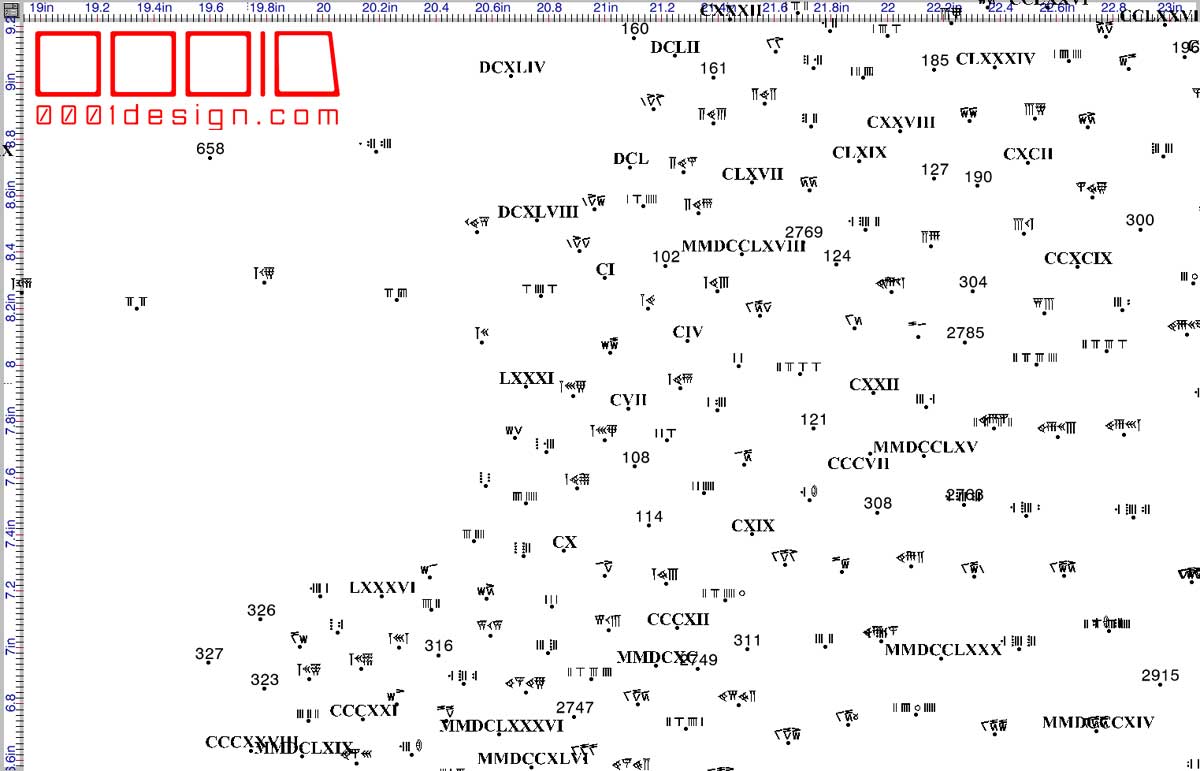Hats off to Neil Leach, Roland Ritter, and Dean Ma for the best conference of 2009. I was on the second panel responding to the mini-presentations on “Parametric Techniques.” This consisted of myself, Marcos Novak, Tom Kovak, Roland Snooks, Marc Fornes, Casey Reas, and chaired by Warren Techentin.

Screencapture of the Parametric Techniques Panel on the Intensive Fields Webfeed, captured by Gustavo Rincon.
My only criticism of the conference was the presented and discussed work was predominately “algorithmic,” rather than “parametric.” Several respondents and speakers used these terms interchangeably, which to me as a computational and parametric designer was a severe transgression.
This is especially evident in the exhibited modes of urban planning and design, where parametric techniques are antiquated and predictable. Countering Delanda’s lectures on the shift into new-materialism, parametric top-down strategies to planning appear more alien with each myopic stab of formalism. These approaches were best exemplified in the uninspiring soft-renders of Schumaker’s urban fabrics, something better termed as “Blendshape Urbanism.” By the loosest definition of parametric, these proposals ultimately manifest themselves as datum process.
Roland Snooks diplomatically mentioned near the end of his presentation that definitive parametric techniques for urbanism were investigated at Kokkugia, but due to the self-evident restrictions to top-down hierarchical digital processes, they were not utilized. Frankly, and I mentioned this in my response, Parametric Urbanism is an oxymoron. Parametric design is defined by two main components: Static Topologies and Permanent Linked References. These two characteristics have no relationship to the macrobial growth and development at a city scale, which are always multi-topological and references are constantly generated and broken.
So city behavior always lends itself to computational techniques. The term “Algorithmic Urbanism” is inherently redundant. Agent-based coding is and will be the preferred mode of urban planning simulation, analysis, and exploration.
Practitioners of these new digital philosophies need to address the difference between “querying” and “linking,” and also to make the distinction between “variable” and “parameters.” Respectively, these terms along side “Algorithmic” and “Parametric,” were all used interchangeably. Granted, the misuse of these terms is ambiguous and often undetectable, but these coupled words mean very different things. And the age of idealism, misappropriation of software, and recursive definitions is drawing to a close.
~~
After participating in the amazing Intensive Fields Conference at USC, Dean Ma threw a great reception at his James Bond house. The discussions continued for hours after the symposium.
Once again, the conference was amazing and I’m glad that I was given the opportunity to participate.





![[0001D] Automated Mega-Dots Tag and Leader Optimization](https://www.nickpisca.com/sherpa/wp-content/uploads/2015/09/20151112_XMLCTDImporter13.jpg)
Nick, I missed the Ustream feed. Is there a link to an archive you can share? Thanks!